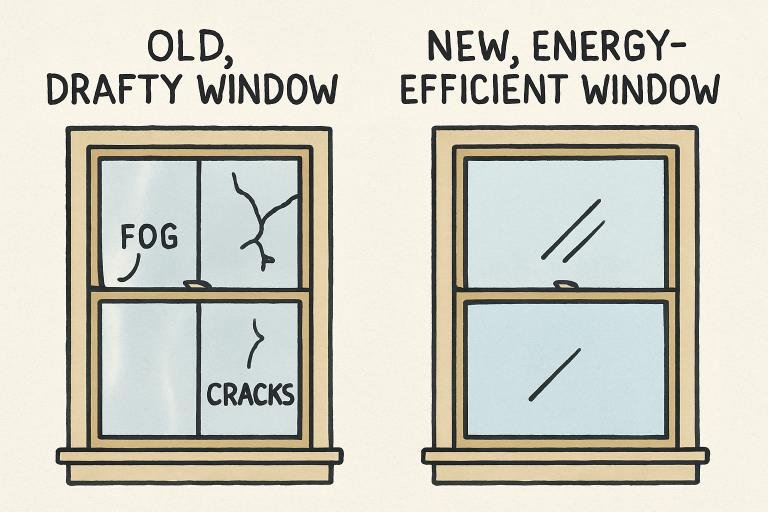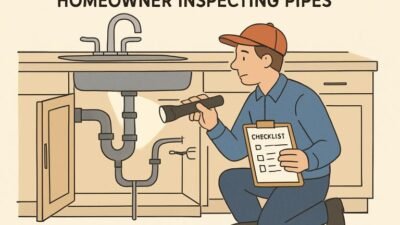Key Takeaways
- Knowing when to replace windows can improve comfort, energy efficiency, and home value.
- Common signs include drafts, condensation between panes, and increasing energy bills.
- Window upgrades often result in lower energy costs and a quieter interior environment.
- Various window materials and styles can suit both budget and aesthetic preferences.
- A professional assessment is recommended if you’re unsure about the condition of your window.
Why Replacing Old Windows Matters
Windows are vital to your home’s appearance and functionality. When windows begin to degrade, they often allow drafts and increased noise, leading to discomfort and rising utility costs. Old and faulty windows don’t just affect how your home looks—they can also directly impact your heating and cooling expenses. According to the U.S. Department of Energy, up to 30% of household energy use may be lost through outdated or poorly sealed windows, making timely replacement a smart investment.
Choosing the proper replacements can dramatically improve your home’s insulation, reduce outdoor noise, and enhance curb appeal. For homeowners looking to update their windows, it can be helpful to consult local specialists familiar with weather conditions in your area. If you’re considering your options, replacement windows Denver professionals offer comprehensive services ranging from assessment to installation, tailored to your region’s unique needs.
Upgrading old windows goes beyond cosmetic enhancements. New, energy-efficient designs can stabilize your indoor temperature and protect against outside allergens and pollutants. Structurally sound and well-sealed windows also act as a key defense against extreme weather, preventing water damage and safeguarding your home for years to come.
Homeowners often overlook subtle signs of window wear and tear, mistakenly chalking up frequent chilly drafts or increased street noise to normal aging. However, catching and addressing these symptoms early with the right window solution can save thousands in cumulative energy costs while adding measurable value to your property.
Inspecting your windows seasonally for these issues helps you act before minor problems become much larger and costlier.
Telltale Signs Your Windows Need Replacing
- Drafts:If you notice a consistent chill or air movement near closed windows—even when securely shut—it’s likely time to replace them.
- Condensation Between Panes:Seeing fog or moisture trapped between glass layers means the window seal has failed, reducing energy efficiency and clarity.
- Difficulty Opening and Closing:Windows that stick, refuse to budge, or won’t lock properly often signal frame warping or mechanical failure, both of which diminish security and insulation.
- Rising Energy Bills:Unexplained increases in heating or cooling expenses typically point to windows that are no longer insulating effectively.
- Visible Damage:Cracks, rot, water stains, or warped frames are more than an eyesore—they’re likely causing loss of efficiency and possibly admitting pests or mold.
Inspecting your windows seasonally for these issues helps you act before minor problems become much larger and costlier.
How New Windows Affect Comfort and Energy Bills
Installing new windows is one of the most effective home improvements for increasing comfort and reducing utility costs. According to experts at Wirecutter, newer windows with double or triple glazing offer highly efficient insulation, eliminating temperature swings and minimizing drafts. Many homeowners report annual energy bill reductions between 12% and 33% with improved window technology.
Beyond cost savings, new windows can dramatically quiet your home, filtering out construction noise or busy traffic. Many modern designs offer easy-clean features, tilt-in sashes, and improved safety locks—all upgrades that simplify maintenance and protect your household.
Types of Windows and Replacement Options
When replacing windows, there’s a wide range of styles and materials to fit any budget, design preference, or functional need. Some popular choices include:
- Single—and Double-Hung Windowsoffer classic designs with vertical sashes for adjustable airflow, making them a versatile option for many homes.
- Casement Windows:Side-hinged and opening outward with a crank, casements provide excellent ventilation and an unobstructed view.
- Sliding Windows:Ideal for modern homes, these move horizontally and maximize glass space for great light and easy use.
- Bay and Bow Windows:These extend outward, adding architectural interest, extra seating, or light to interior spaces.
- Specialty Shapes:Options like arches, circles, and custom geometries can enhance curb appeal and help your home stand out.
Vinyl, fiberglass, and clad wood are the most common materials, each offering unique benefits in durability, aesthetics, and price.
Steps to Take Before Replacing Windows
- Conduct a draft test: On a windy day, hold an incense stick or match near the window seams and watch for smoke movement.
- Check for visible signs of damage, such as soft wood, chipped paint, cracked panes, or persistent condensation.
- Examine recent utility bills and note any unusual increases in heating or cooling costs.
- Consult a reputable window specialist for a comprehensive assessment and personalized recommendations.
- Determine your budget, weighing immediate installation costs against long-term savings and added home value.
Taking these preparatory steps can ensure you choose the right replacement solution for your needs and avoid unexpected expenses.
Tips for Choosing the Right Replacement Windows
- Select windows with ENERGY STAR® certificationfor maximum efficiency and rebate eligibility.
- Factor in your climate; some windows are better at keeping heat out, while others excel at trapping warmth inside.
- Look for easy cleaning, child safety, and enhanced security to boost daily convenience and peace of mind.
- Match window styles with your house’s architecture to ensure a seamless, attractive upgrade.
- Prioritize sound insulation if you live near busy roads or in densely populated neighborhoods.
Even subtle upgrades in glass coatings or frame materials can significantly impact overall home performance and comfort. For tailored advice, it is always recommended to consult with a trusted local installer.
Frequently Asked Questions
- How long do typical windows last?Depending on materials, climate exposure, and maintenance, most last between 15 and 30 years.
- Can one window be replaced at a time?Many homeowners definitely opt for phased replacement for budget flexibility.
- Will new windows add value to my home?Energy-efficient and aesthetically pleasing windows remain a top-selling point and contribute to a higher resale value.
- Are there rebates or tax credits for installing energy-efficient windows?Check the ENERGY STAR® federal tax credit guide for up-to-date incentive information.
Recognizing when windows no longer serve their purpose is key to protecting comfort, energy efficiency, and home value. By addressing issues early and exploring modern replacement options, homeowners can enjoy improved aesthetics, lower utility costs, and long-lasting performance, ensuring a safe and welcoming living environment for years ahead.



